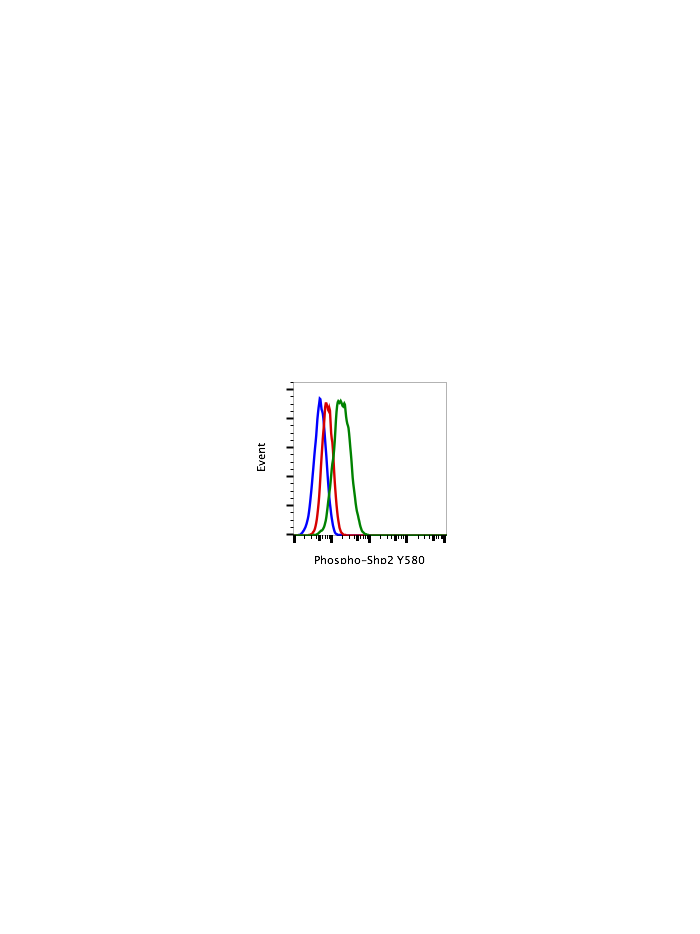Phospho-Shp2 (Tyr580) (4A2) rabbit mAb FITC conjugate
From
$118.80
In stock
Only %1 left
SKU
2103
Src homology region 2 (SH2)-containing protein tyrosine phosphatase 2 (Shp2, phospho Shp2), encoded by PTPN11 gene, is a non-receptor phosphotyrosine phosphatase which is ubiquitously expressed in mammalian cells and contain one protein tyrosine phosphatase (PTP) catalytic domain and two SH2 domains. The phosphatase active site is located in the C-terminal of Shp2. Shp2 is phosphorylated by several stimulants and cytokines at Tyr580 inducing Shp2 activation. Activated Shp2 recruits Grb2 and Tyr580 phosphorylation of phospho Shp2 functions as the main binding site of Grb2, thereby activating downstream Ras in response to growth factors. In turn Grb2 controls FGFR2 phosphorylation by inhibiting receptor kinase and Shp2 phosphatase activity. Shp2 also promotes both ERK1/2 and PI3K/AKT signaling. High levels of Shp2 has been found in several cancer types including breast cancer and melanoma.
| Applications | Flow Cytometry |
|---|---|
| Clone | Shp2Y580-4A2 |
| Format | FITC |
| Validated Reactivity | Human, Mouse |
| Cross Reactivity | Predicted to work with mouse, rat and other homologues. |
| Clonality | Monoclonal |
| Immunogen | A synthetic phospho-peptide corresponding to residues surrounding Tyr580 of human phospho Shp2 |
| Formulation | 1X PBS, 0.09% NaN3, 0.2% BSA |
| Isotype | Rabbit IgGk |
| Preparation | Protein A+G |
| Recommended Usage | For flow cytometric staining, the suggested use of this reagent is 5 µL per million cells or 5 µL per 100 µL of staining volume. It is recommended that the reagent be titrated for optimal performance for each application. |
| Storage | 2-8ºC |
| Pseudonyms | Tyrosine-protein phosphatase non-receptor type 11, Protein-tyrosine phosphatase 1D, PTP-1D, Protein-tyrosine phosphatase 2C, SH-PTP3, PTPN11, PTP2C, SHPTP2 |
| Uniprot ID | Q06124 |
| References | 1. Bennett AM et al., (1994) Proc Natl Acad Sci USA. 91:7335–9. 2. Feng GS et al., (1994) Trends Genet. 10:54–8. 3. Mohi MG et al., (2007) Curr Opin Genet Dev. 17:23–30. 4. Vogel W et al., (1996) Cell Growth Differ. 7:1589–97 5. Ahmed Z et al., (2013) J Cell Biol. 200:493–504. 6. Hu ZQ et al., (2014) Oncol Rep 32:205-212. |
Write Your Own Review



